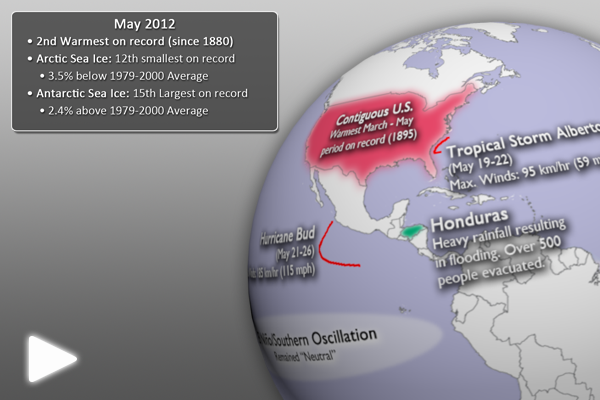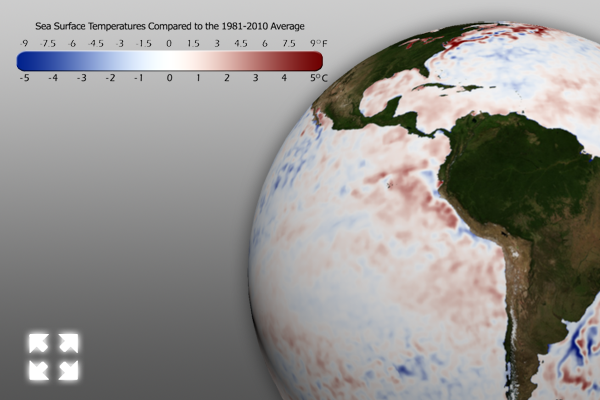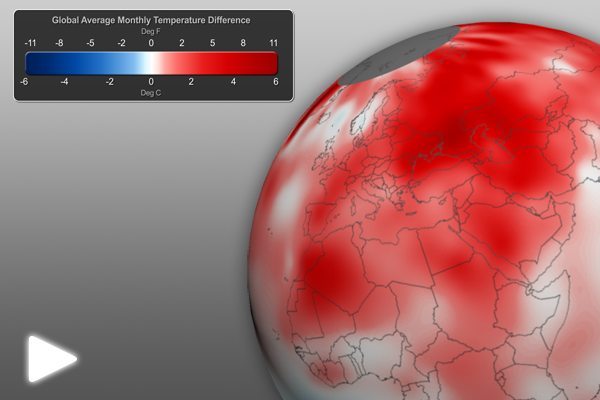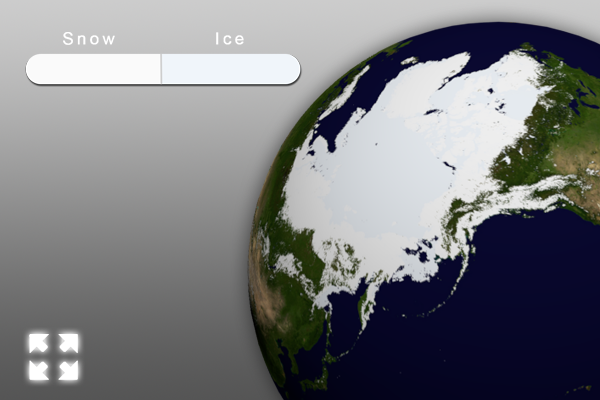Each month, we will provide information regarding the previous month’s climate. Overall, preliminary data analysis suggests that May 2012 was the 2nd warmest May on record (since 1880). Major stories include a warm contiguous United States, cool Australia, and continued neutral conditions for El Niño and La Niña. More detailed information follows:
- This dataset shows some of the major May climate highlights from the National Climatic Data Center’s (NCDC) monthly global climate analysis. The events are noted below with more information.
- El Niño/Southern Oscillation (ENSO): Neutral (not El Niño or La Niña) conditions prevailed in the eastern tropical Pacific Ocean dissipated during April, giving way to neutral ENSO conditions. Click here for more information about ENSO and how it may impact the climate outlook for the coming months.
- Hurricane Bud: With maximum sustained winds of 185 km/hr (115 mph), Bud was the strongest East North Pacific storm on record to form so early in the year. (May 21 – 26)
- Australia: Well below normal, the average May minimum (low) temperature for Australia was the fifth coolest on record (since 1949).
- China: In northwestern China, severe storms produced heavy rain and dangerous hail. (May 10)
- Eastern Ethiopia: Flash floods caused significant crop damage. (May 2)
- Austria: Austria experienced its seventh warmest March – May period on record. (since 1767)
- Eastern Brazil: The worst drought in fifty years affected over 1,100 towns.
- Honduras: Heavy rains resulted in flooding that forced the evacuation of over 500 people. The floods also damaged over 100 homes.
- Tropical Storm Alberto: The first Atlantic tropical storm of the 2012 season was also the earliest-forming tropical storm in the Atlantic since 2003. The maximum sustained winds were 95 km/hr (59 mph). (May 19-22)
- Contiguous United States: The U.S. experienced its warmest March – May period on record (since 1895).
- The real-time sea surface temperature anomaly dataset is a great way to visualize moderating water temperatures in the eastern tropical Pacific ocean. This helps show the warmer waters, indicating the loss of La Niña and transition to a neutral period.
- Remember that the blues indicate cooler than average temperatures and reds indicate warmer than average temperatures (white: average).
- Using the real-time Monthly Temperature Anomalies dataset is a great way to convey where some of the warmer and cooler than average areas were in May.
- The combined global land and ocean average surface temperature for May 2012 was the 2nd warmest on record at 15.46˚C (59.79˚F), which is 0.66˚C (1.19˚F) above the 20th century average.
- The combined global land and ocean average surface temperature for January–May 2012 was the 11th warmest on record.
- Please see the “May 2012 Second Warmest on Record” post for more information.
- Aside from helping to illustrate seasonal changes, the real-time Snow and Ice Cover dataset is a great way to convey sea ice change through time, including discussing how the current sea ice extent compares to other noteworthy years.
- The Arctic sea ice extent in May was 12th smallest on record. The extent was 3.5% below the 1979-2000 average.
- In Antarctica, the April sea ice extent was the 15th largest on record, at 2.4% above the 1979-2000 average.
- North America had its 8th smallest May snow cover on record (since 1967).
- Eurasia had its smallest May snow cover on record (since 1967).
Where do I find the datasets?
- First, check your SOS system to make sure they are not already in the EarthNow category. There is also an earthnow.sos playlist file that includes a playlist with all of these datasets.
- If not, you can download the datasets and playlist files from this FTP Site.
Helpful Resources for More Information
- http://www.ncdc.noaa.gov/oa/ncdc.html National Climatic Data Center (NCDC)
- http://www.ncdc.noaa.gov/teleconnections/enso/enso-tech.php About ENSO (El Niño/La Niña)
- http://www.ncdc.noaa.gov/sotc/global/ NCDC’s Global Climate Report










